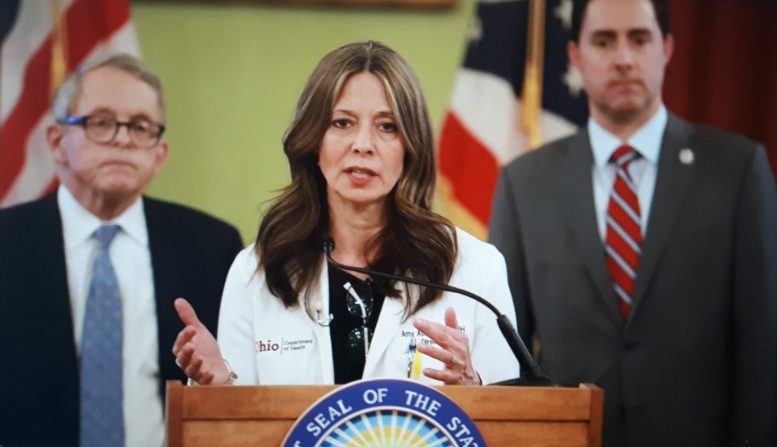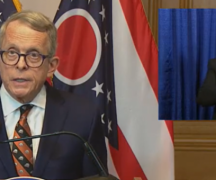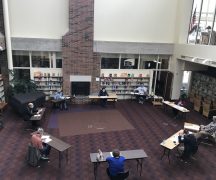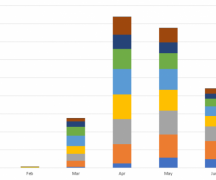By Susan Tebben
Doctors across the state are counseling their patients to wear masks and remain cautious about coronavirus, even as their patients and the rest of Ohio is split on best practices.
While the country and the state say they are ramping up testing and digging into studies of vaccines and treatments, the best medicine right now is still social distancing, local physicians say.
“If you live in society, sometimes society’s needs have to come before your own,” said Dr. Anita Somani, an OBGYN in Columbus. “Your health and well-being depends on the health and well-being of the society you live in.”
There’s still so much that’s unknown about the disease, and medical professionals say taking simple precautions along with staying home as much as possible is still the only sure-fire way to slow the spread.
Dr. Ean Bett, a family medicine physician, said it’s important to be respectful of people who may not have the same understanding of medicine as doctors and nurses, but it’s also important that the public gets honest information.
“When something is new, there’s a lot of trial and error,” Bett told the Capital Journal. “This is not something that we can have a lot of trial and error on, because it is easily (spread) between people who are well and people who are not well.”
With that in mind, Bett, Somani, and many other doctors stood on the steps of the Ohio Statehouse a few weeks ago, six feet apart but united in their message of support for Dr. Amy Acton, director of the Ohio Department of Health.
The group, comprised of members of the Physicians Action Network, came together in an almost overnight decision after watching protesters gather at Acton’s house to express their displeasure at health orders she’d recommended to Ohio Gov. Mike DeWine, and which the state had enacted in light of the coronavirus spread.
In particular, protesters felt their freedoms were being tampered with by mandating the use of masks in everyday activities. DeWine later walked back the mandate and turned it into a recommendation.
While the doctors have generally supported the governor’s decisions — and believe Acton’s decisions all have science-based reasoning — they were disappointed to see DeWine loosen the mask mandate.
“Wearing the mask isn’t a violation of your First Amendment rights, this has nothing to do with restricting your ability to assemble, to protest, any of that,” said Dr. Greg Lam, a cardiologist in southern Ohio, and member of the Physicians Action Network.
Somani said ambiguity in the messaging coming from state and national leaders only leads to more confusion. And when it’s a matter of a health emergency, history shows the confusion adds to reticence from the public.
“Even when AIDS and HIV came out, there was so much we didn’t know, so there was so much fear and hesitation,” Somani said. “That transition is normal any time there’s a new disease, but as you learn about it, you learn more about it, you start to put the full picture together.”
In order to help patients sift through the information, doctors are taking distribution into their own hands.
Internal medicine physician Dr. Andrew Schamess works with many high-risk patients in his practice, and sends out regular messages, giving them updates on developments in virus treatment and vaccination.
“No one is expecting an overnight solution, but it helps them to know progress is being made,” Schamess said.
A controversial comparison being made during the pandemic is the numbers of flu cases in the state and nation versus the coronavirus rates. Doctors say this is a dangerous comparison to make because not only do we not know the full extent of the coronavirus spread, the long-term physical impact of COVID-19 also can’t be compared to influenza strains.
“Despite the best efforts of medical science, and physicians and other clinicians, we can not prevent people from dying from the flu,” Bett said. “We don’t have the same handle on this (disease).”
The potential for COVID-19 to aggressively spread further is still there, and the lack of a vaccine means there is still no decisive medical barrier. That also means the chronic conditions impacting respiratory and kidney function that have been connected to coronavirus are still very possible, unlike with the flu.
“There are so many strains of the flu, but the bottom line is there are no long-term chronic conditions connected to the flu,” Somani said. “With COVID-19, a year from now you could be on dialysis or you can’t run as far as you used to.”
***
More from Ohio Capital Journal:
Masks help stop the spread of coronavirus – the science is simple
I’m a data scientist at the University of San Francisco and teach courses online in machine learning for fast.ai. In late March, I decided to use public mask-wearing as a case study to show my students how to combine and analyze diverse types of data and evidence.
Much to my surprise, I discovered that the evidence for wearing masks in public was very strong. It appeared that universal mask-wearing could be one of the most important tools in tackling the spread of COVID-19. Yet the people around me weren’t wearing masks and health organizations in the U.S. weren’t recommending their use.
I, along with 18 other experts from a variety of disciplines, conducted a review of the research on public mask-wearing as a tool to slow the spread SARS-CoV-2. We published a preprint of our paper on April 12 and it is now awaiting peer review at the Proceedings of the National Academy of Sciences.
Since then, there have been many more reviews that support mask-wearing. READ MORE





